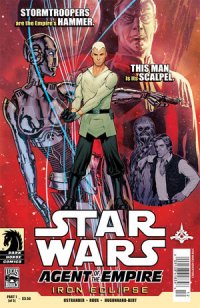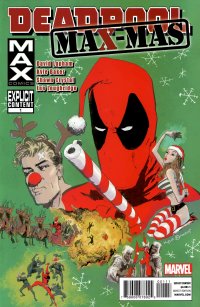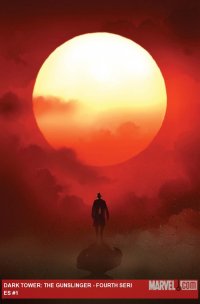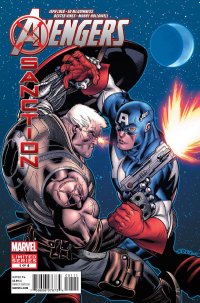Just as I was about to upload this week’s column, I learned of the death of Joe Simon, co-creator of Captain America (among many other comics), at age 98. Following the recent passing of Jerry Robinson (and the death just the other day of Eduardo Barreto), it’s not the jolliest holiday season ever for comics fans.
This week, we begin with another fascinating, perceptive essay from Bart:
“Comic Book Day”, E-Books, and the Hipster
By Bart Bishop
I’ve had this tradition that started when I moved to Greenville, South Carolina. From 1999 to 2006, I went to a comic shop called Borderlands every Wednesday with a group of friends. This came to be known as “Comic Book Day”. As any comic book fan knows, Wednesday is when the new releases are put on the stands, and it was our imperative to get the newest release as soon as possible. Beginning as a very solitary purpose, possessing the freshest glossy depiction of sequential artistic adventure, evolved into something much more over time. Wednesdays were a sacred day that meant no matter what was going on in our lives we would drop everything to make time for comics and for each other.
Now, the comic shop itself is not always the most welcoming place for an outsider. Most look like a hoarder’s worst nightmare, with long boxes battling Warhammer board games for dominance. The shelves of recent and new releases tend to be disorganized, and overflowing, often shunted together by category (say, the newest issue of Cable sitting in with the other X-Men issues) rather than alphabetical order. There’s dust everywhere, and possibly a strange combination of pre-pubescents and middle aged men bickering over Pokemon cards in the back. These males, who dominate the comic book space (most women I’ve seen are dragged there by boyfriends) tend to be disheveled, in a hurry, and they don’t make eye contact.
This is where my group differed. We invaded the comic book store in packs, often two cars worth of friends. We chatted loudly, with each other and with the store owners (Stan at the time), who was nothing like the stereotypical “Comic Book Guy” from The Simpsons. I learned about Sandman and Hellboy from Stan, for which I’ll always be grateful. Often times our discussions were infectious, drawing in other regulars. Not to say we are superior to the lone wolves; their experience with comic books is their own, and maybe they retreat back to their perfectly normal lives, complete with wife and kids, and view comic books as a singular experience. They’re in it for the comics alone; I learned over time that I’m in it for the community and the social aspect.
Many times over the years I’ve retreated from this community. In 2006 I moved to Cincinnati to pursue my Masters degree, and during that time I stepped into a comic book store maybe five times. Those times were rarely on Wednesdays, and never with packs of friends. To save money, I even cut myself off from buying any monthly floppies for several years, switching instead to the occasional trade paperback, and eventually to borrowing trades from the library entirely and not spending any money on comic books. Although the Cincinnati library system, and now the Greenville library system, has a strong selection of trades and graphic novels, something had been lost.
I briefly tried getting back into collecting monthly floppies in 2007 with Grant Morrison’s Batman, but it didn’t stick. I realized that I was lacking the social aspect, and my insular existence reflected that. Actually, there was a lot going on in my life at the time, and comic books alone were not enough to fix that. It wasn’t until I moved back to Greenville last year that “comic book day” could be revived. This past August, in reaction to the spectacle of the New 52, I regained the excitement of being a part of a greater community, something bigger than my own fandom, when it comes to comic books. I met Borderland’s new owner, Rob, who is full of infectious glee at being immersed in his world. Writing reviews for CHUD, as well, has fueled my interest in seeking out a wide arrange of titles and genres from different publishing companies. That variety wouldn’t be possible without fellow human beings to hash it out with.
At the forefront of all this is the monthly floppy, the serialized version of a comic book series. At my core I think that trade paperbacks and original graphic novels are a more efficient and economic means of distribution, or something more akin to Manga digest books, but that would rob the thrill of the cliffhanger from week to week. Most trade paperbacks contain an entire story arc, and although there can be a cliffhanger that leads into the next story (or the next part of the same story), it’s not as riveting as the sense of escalation that each issue having a cliffhanger conveys. I equate this to a weekly television series; in their primes, episodes of shows like Buffy the Vampire Slayer and Lost (which both had writing staff known for also being involved in the comic book industry) would end on a note that would leave me breathless. It’s not quite the same as waiting a week when you get the entire series on DVD and can watch the next episode immediately.
Digital comic books, however, threaten to change the whole landscape of the monthly floppy. With the growing popularity of smart phones and tablet computers, particularly Apple’s iPhone and iPad, many major publishers have begun releasing titles in digital form. In November of 2007, Marvel Comics launched Marvel Digital Comics Unlimited, a subscription service allowing readers to read many back issues online. The service also includes periodic releases of new comics not available elsewhere, and last month’s Avenging Spider-Man also featured the first free digital copies as part of the print copy of the comic book. DC Comics, meanwhile, starting releasing same-day digital copies of their New 52 back in August, and Dark Horse Comics started same-day digital on December 14.
Although there will still be the benefit of cliffhangers and the serialized experience, this will remove the social aspect of comic book collecting. The middle man will be removed entirely, as you’ll no longer have to venture out to the comic book store and shoot the breeze with the owner and fellow patrons. Word-of-mouth will now be relegated to the Internet without that personal touch, and suggestions of books to check out will now be from complete strangers. Who can you trust? There’s also a more immediate concern, as digital comic books present the same problem as eBooks: lack of ownership.
Cory Doctorow, author of Down and Out in the Magic Kingdom and co-editor of the group blog Boing Boing, discusses eBook readers in his July of 2009 article, “Amazon’s Orwellian Deletion of Kindle Books”. Pointing out an instance in which Amazon un-sold copies of The Works of George Orwell, refunding their customers’ $5, he says:
‘Amazon claims that they won’t do this again. But as every good novelist knows, “A gun on the mantlepiece in act one must go off by act three.” Once it’s possible for the mothership to remotely zap all our devices, the possibility exists that a hacker will attack them, or a courtroom will order an injunction against them (at one point, a US magistrate ordered ReplayTV to send out a firmware update that would brick its devices as part of the preliminaries to a court case), or the feature will go haywire, or the management of Amazon will change.’
Bear in mind that Doctorow is not against the digitalization of literature, but of e-readers that limit the accessibility of a product for a reader. He would, for instance, much rather leave it up to individual authors to release their works on their websites. An example of how monopolizing product can be harmful to readership accessibility is from this past October, when DC Comics announced that it would release digital copies of 100 graphic novels, including The Dark Knight Returns and Watchmen, exclusively on the Kindle. This decision did not go over well with mega-retailer Barnes and Noble, whose Nook e-reader was excluded by the deal, and has now decided to remove all copies of those specific DC titles from their retail stores.
I appropriated Doctorow’s argument to not only articulate how the digitalization of comic books will limit availability of specific graphic novels to one e-reader and make hard copies harder to find, but it will remove one of the key components of the comic book industry: collectibles. From variant covers to Absolute Edition hardbacks, the average comic fan likes to physically own his possessions and be able to show them off. Step into a fan’s house and the most prominent piece of furniture will be the bookshelf and/or DVD rack, probably buttressed by posters and guarded by poised action figures and models.
For a couple of years now, I’ve subscribed to the Buddha’s “Middle Way”, taking everything in moderation and that applies to material possessions. After a big move from Ohio to South Carolina, I got rid of almost everything I own. Around this time I bottomed out entirely on collecting any comic books, including trade paperbacks, and borrowed everything from the library. Although this set me about six months behind the rest of the comics community, a wide array of possibilities was made available. Without worrying about income, I had access to hundreds of graphic novels and trade paperbacks. I read Nexus for the first time because of the local library, and incredibly entertaining reprints of the 1960s and ’70s Brave and the Bold. What I came to realize, as well, is that going to the library and perusing the shelves for whatever catches my eye is not unlike going to a comic book store, although it’s mostly a solitary venture.
Still, while it’s not me to celebrate my fandom with extravagance, I recognize that most fans like to accessorize and I respect that (within reason). The problem is the nature of that accessorizing. In order to combat the isolation and lack of variety that digital comics face, comic book stores and fandom need to change their image to keep old readers and welcome new readers. The closest association I can make is the record store and fans of vinyl records. The stores are equitable in that they tend to be hole-in-the-wall niche shops that house eccentric customers and employees (think High Fidelity, the 2000 John Cusack vehicle that depicts fandom about as accurately as I’ve ever seen). The fans, the collectors, do not proceed from a place of need but of want, making illogical claims like “vinyl sounds better” or is more pure. Sound familiar?
Regardless of logic, those fans have managed to nurture an image of cool. “Hipster” would be the best catch-all phrase, even though that term has taken on a negative connotation in recent years. Hipsters may be a too-cool-for-school know-it-alls, but they’re also tapped into the vein of whatever is new, fresh, or obscure. Whether it be that unreleased Japanese import of Radiohead B-sides or the latest band you’ve “probably never heard of” or they “liked before they were popular”, the hipster has rewritten the geek narrative into a counterculture hero. The key thing about hipsters, as well, is that they travel in packs: you’ll recognize them from their skinny jeans, neckbeards, and PBRs. There’s always a group of them, because the hipster attracts followers that they can glean recognition from or needs a buddy that likes to argue.
The goal of the comic book store of the next decade, and the 21st century, needs to be to rewrite its own narrative. For too long the only representative has been the aforementioned “Comic Book Store Guy”. That needs to change, because digital comics are threatening to lure the already shy and reclusive comic book fan away from the comic shop, and even away from the Graphic Novels section at Barnes & Noble, and deeper into a cycle of purchases and assimilations without human context. Some of my best times have been buying, reading, and talking about comics with friends and shop owners, and the next generation threatens to lose that. Being a collector is not always the healthiest lifestyle, but buying that random back issue of Denny O’Neil’s The Question out of a long box because a fellow comic shop patron recommended it, rather than purchasing it on a Nook after finding it on a random google search, will always be the better choice. Every young fan should have a “comic book day” of their own.
Star Wars: Agent of the Empire #1 (Dark Horse, $3.50)
By D. S. Randlett
I’ve never heard of Stephane Roux before, but the gentleman has some pretty obvious chops. He has a very familiar style, very similar to someone like Carlos Pacheco, but his art here has an energy all its own. I’d even go so far as to say that he breathes just the right type of life into John Ostrander’s script, enough so that this book just wouldn’t be the same without him. Roux pulls off a really admirable balancing act, helping this story to feel not only cool (probably the element that most artists would seize on), but fun and funny. There’s as much Danger, Diabolik! here as there is Bond. Which isn’t to say that the script is bad in any way. Roux wouldn’t be able to emphasize the elements that he does in this story if they weren’t there to be seized upon.
Jahan Cross is one of the Empire’s crack agents. The issue opens with him taking down a traitor to the Empire, who happens to have very strong ties to something in the Corporate Sector called “Iron Cross”. We don’t learn very much about the Corporate Sector in this issue, but I presume that it will be like a Star Wars version of Monaco. In fact, we don’t learn very much of the larger plot outside of some exposition that kicks off the series’ main mystery.
The focus here is squarely on establishing character and tone, which is no bad thing. Cross himself is a likable enough protagonist. He’s obviously modeled on Bond in his Pierce Brosnan regeneration. Not quite quippy, but with a smile underneath it all. He also looks a lot like Lee Marvin, which in itself is pretty awesome, and helps him outcool a very familiar face that pops up near the end. The tone is brisk, light, and fun. Ostrander manages to blend the classic Bond and Star Wars vibes quite well (we even get a Q scene), and having Cross work for the Empire works as a comment on James Bond in a way. He’s in it for the adrenaline more than the politics, and while he’s an extremely likable character, he’s still the finger of an oppressive regime. Although, I doubt that Ostrander is really to going to follow that implication in this story, as it’s implied that the people that Cross is going to be going after are even worse. But who knows? Jahan Cross himself seems to be a man with a few secrets.
Agent of the Empire’s first issue may be light on plot, but it is a surprisingly good introduction to a series that feels like it’s going to be lots of fun.
Rating: Out of a Possible 5 Stars




 Yule Be Spending: Two Christmas Specials
Yule Be Spending: Two Christmas Specials
By Jeb D.
Deadpool MAX-MAS (Marvel, $4.99)
Jingle Belle Gift-Wrapped (Image/Top Cow, $3.99)
The Christmas cash grab is nearly as old as commerce, and in comics, the traditional trappings can feel as awkwardly shoehorned in as an ad for Hostess fruit pies. That sort of leaves comic creators with the choice to either take the holidays at face value, or play the subversion card. Over the past few years, Marvel has tended to hand that role to The Punisher, and writers like Andy Diggle and Jason Aaron have been more or less successful at having Frank Castle greet the holidays on his own sanguine terms. This year, David Lapham (whose bitter, hard-boiled sensibilities can make Diggle or Aaron feel like fresh-faced kids) takes on the job of trimming the MAX version of Deadpool in bloody tinsel, and the result is… well, it’s a bit of a bore.
The basic premise is vintage: take a familiar Christmas tale and turn it on its head, in hopes of getting a few yuks. In this case, It’s A Wonderful Life is used as the template, as Deadpool is going to show Hydra Bob what the world would be like if he’d never been born. You won’t be amazed to discover that, unlike George Bailey, Bob is going to see how much better off those close to him would have been without him (quite the knee-slapper of a concept, I’m sure you’ll agree). The problem is that Capra’s film sets up George Bailey perfectly: by the time Clarence saves him from suicide, we’ve come to care for him–we already know his worth to his family and friends better than he does; it’s worth recalling that the “revelations” actually come fairly late in the film, giving the town and its people time to be fully realized. But even for regular readers of the Deadpool MAX comics, Bob isn’t much of a character; for anyone picking this up as a one-shot, he’s a complete nonentity: he only exists as a sounding board for Deadpool one-liners. Had Lapham tried this with the roles reversed, with the blandly neutral Bob standing in for the slyly sage Clarence, we might have had some fun with Wade’s reactions to the bleak visions he’s shown. As it is, the whole enterprise is just a series of shrugs.
The art (from Lapham, Kyle Baker, and Shawn Crystal, with Lee Loughridge) ranges from fairly plain (for this series) to deliberately ugly (particularly where the subject of sex is concerned, which is a whole essay that needs to be written sometime). The book’s theoretically in continuity, so completists may want to spend the five bucks. But that’s not you, is it?
Of course, making a grab for Christmas cash is much easier for Paul Dini,  since his elfin character Jingle Belle is Santa’s daughter. Thankfully, he doesn’t sit back and rest on his holly, but takes the trouble to find a Christmas myth he can twist in ways that are actually creative and maybe even slightly thought-provoking. According to Dini’s Jingle Belle: Gift-Wrapped, the wonderfully creepy German monster of myth, the Krampus (pronounced “Krahm-poos,” by the way) became a Christmas tradition by serving as Santa’s partner in a kind of “good cop-bad cop” partnership, scaring kids into being good so Santa can reward them. But that kind of “tough love” has fallen out of favor, and Krampus now sits alone, reminiscing about the old days and deploring the newer, gentler treatment that today’s kids are getting, until he receives a summons from Mrs. Claus: the eternal father-daughter battle between Kris Kringle and his free-spirited daughter has reached a boiling point, and she hopes that both will listen to the unbiased judgement of Santa’s former comrade in Christmas. Alas, Krampus has plans of his own…
since his elfin character Jingle Belle is Santa’s daughter. Thankfully, he doesn’t sit back and rest on his holly, but takes the trouble to find a Christmas myth he can twist in ways that are actually creative and maybe even slightly thought-provoking. According to Dini’s Jingle Belle: Gift-Wrapped, the wonderfully creepy German monster of myth, the Krampus (pronounced “Krahm-poos,” by the way) became a Christmas tradition by serving as Santa’s partner in a kind of “good cop-bad cop” partnership, scaring kids into being good so Santa can reward them. But that kind of “tough love” has fallen out of favor, and Krampus now sits alone, reminiscing about the old days and deploring the newer, gentler treatment that today’s kids are getting, until he receives a summons from Mrs. Claus: the eternal father-daughter battle between Kris Kringle and his free-spirited daughter has reached a boiling point, and she hopes that both will listen to the unbiased judgement of Santa’s former comrade in Christmas. Alas, Krampus has plans of his own…
As usual, the story revolves around Dini’s portrayal of Jingle Belle as a “just-this-side-of-cliché” modern teenager set in the most tradition-oriented family environment possible, and the escalation of the conflict between herself and her father is nicely paced, and filled with good verbal and visual jokes. It’s a genuinely, delightfully “all-ages” comic.
Had this comic been that 22-page story offered for $2.99, I’d have definitely called it a four-star purchase. I’m less enthralled with the rest, though: Belle’s witch friend Polly stars in a bit of filler that steps completely out of context and breaks with the holiday/winter trappings, and Belle herself has an encounter with a hockey player that skates right up to the edge of date-rape, and resolves its situation in a fashion that’s a bit too glibly comic-booky for comfort. Stephanie Gladden’s art is a joy throughout, but it’s only the main story that seems to completely engage her visual imagination (the colors by Felix Serrano and Tom Feister are excellent). My only complaint is that, on the cover, Jingle looks vaguely demented.
Deadpool MAX: Rating: Out of a Possible 5 Stars Out of a Possible 5 Stars




Jingle Belle: Rating: 




 The Dark Tower: Gunslinger: The Way Station #1 (Marvel Comics, $3.99)
The Dark Tower: Gunslinger: The Way Station #1 (Marvel Comics, $3.99)
By Bart Bishop
I’ve been a fan of Stephen King since I was a kid. In fact, I’m writing this review just after attending a book signing of his in Alpharetta, Georgia. The Dark Tower and I, therefore, have much personal history. Having read the first four books as a teenager, I eagerly anticipated the release of the last three. Although they weren’t as prolific as the earlier books, and the last book especially had problems, ultimately the series as a whole was a satisfying tome and King’s magnum opus.
With that in mind, I’ve followed the comic adaptations off and on since they began in February 2007. Robin Furth, King’s personal research assistant and author of The Dark Tower: The Complete Concordance, and comic legend Peter David have collaborated on each of the nine series so far, with the first five fleshing out Roland’s backstory from Wizard and Glass. The last three have moved on to The Gunslinger proper, with the seventh series having covered “The Little Sisters of Eluria” (a short story published in 2002’s Everything’s Eventual).
King wrote the opening line of The Gunslinger, “The Man in Black fled across the desert, and the Gunslinger followed” while a sophomore at the University of Maine, the middle portions while struggling with Salem’s Lot, and was inspired to finish while writing The Stand. Although the novel was published in 1982, the five parts that comprise it were originally published in magazines. “The Way Station”, published in 1980, picks up in the second quarter of the book, and the comic does as well. Roland still pursues Walter o’Dim aka Marten Broadcloak, the quintessential King villain Randall Flagg, but along the way encounters packs of rabid dogs and vampiric dust devils. This issue also introduces pivotal character Jake Chambers, future gunslinger and surrogate son of Roland, for now a lost ten year old boy from 1977 New York City.
Further and David have the imposing task of transferring a story from one medium to another. It’s a balancing act, as Furth guarantees fidelity to the source material while David must tell a respectful story while adding his own unique flair and making it all compelling. David is another pesonal favorite, as my formidable years were spent reading his Incredible Hulk. In graduate school I wrote a paper on depictions of homosexuality in genre fiction, discussing Northstar, and used an article David wrote in The Comics Journal in the early 1990s as evidence. At the 2007 Charlotte, North Carolina Heroes Con I met him and informed him of that fact. He was not impressed.
Still, I love his writing and believe he has a firm grasp on the voice of Roland Deschain. The plot, however, is a bit impenetrable at this point. The throughline narrative of the Man in Black as wily antagonist is there, but there’s little indication (for a #1 issue) as to why Roland pursues the man. This was fine thirty years ago, when King struggled to nail down exactly who the Man in Black was, but with the series complete these two authors should be able to present a shorthand explanation without new readers being expected to have read the last eight mini-series. It’s hard to decipher, as well, who handles what writing chores as Furth’s brief essay, “Transcending Time”, in the back of the book takes most of the credit for the writing and changes done in fleshing out “The Way Station”. A loop motif is introduced at the beginning of this issue, as Roland finds himself experiencing “deja view”, reliving events from an earlier mini-series. Although this plays into King’s intentions with the novels, it proves disconcerting here, as there’s little transition from Roland’s palaver with Brown and the gunslinger’s trek across the desert. David’s voice comes through the strongest, however, with the enigmatic omiscient narrator who is distinctively not Roland but is intimately familiar with him, playing intermediary between the gunslinger and King’s Constant Reader.
The artwork is crisp and detailed, reminiscent of Jae Lee and keeps a consistent tone with the previous mini-series although this is the first time Laurence Campbell has been an artist for The Dark Tower. Richard Isanove’s coloring goes a long way towards maintaining that consistency. His cover is a striking image, as a traditional western hero rides off into the sunset but Roland is turned away from it. The giant sun, as well, evokes the grueling heat and detailed struggle Roland faces as he runs low on water. Although Campbell’s art reinforces the stark nature of Mid-World, it being a surreal place and Roland’s experience being outside of time, it’s unfortunate that there’s an overreliance on lack of backgrounds. I understand that this hints at desolation, a lack of world beyond Roland’s isolated existence, but it’s a wasted opportunity to give Mid-World more personality beyond old west desert. The later books bring in post-apocalyptic technology and Lord of the Rings-esque witchcraft & wizardry, why not hint at that here? Roland himself, as well, is kept almost entirely in shadows. His younger self is shown in the earlier volumes, so keeping him mysterious in appearance now is unnecessary and contradictory. If he’s supposed to be at a distance from the audience, why have him monologuing aloud and allow us front row seats to his hallucinations? Roland is no longer the question mark he was back in 1982, so the shadows came across as silly.
This is a worthy continuation of The Dark Tower saga, and even the additions stay true in spirit to the original novels. There are, however, still a few kinks to be worked out. An argument could be made that jumping in at this point is improbable and reading the previous volumes is a requirement, but that’s silly if the math is considered. This is the ninth mini-series so far, with each mini-series being at least five issues; if the remaining novels ended up being at least twenty fives issues each, then The Dark Tower won’t be finished in comic book form in a decade. Furth, David, and Marvel should be viewing this as an ongoing series, even if disguising its story arcs as mini-series makes for lucrative marketing and profitable trade paperback sales. The Dark Tower novels were never the most comprehensible, but they worked as tone poems; with the addition of visuals, there has to be an attempt at grounding Roland’s journey in a more concrete manner (which is why I’m wary of there ever being a movie).
It was really cool to meet Stephen King, by the way, in a Wal-Mart of all places. I’m enjoying what others are doing with his work, but I wish more risks would be taken.
Rating: Out of a Possible 5 Stars




Pigs #1-4 (Image, $2.99 each)
By D. S. Randlett
Espionage fiction in the current era is in a hard place. The rules of the genre were written in the Cold War era, while the rules of spycraft have changed considerably. Most modern spy fiction, unless set in the past or cut from whole cloth, tends to feel unauthentic as a result. Modern threats like terrorism, true stories of which sound more like crime fiction, or China, whose attacks tend to come in the cyber variety, just don’t fit the molds of conflict that we’re all used to in our spy stories. There are new rules, but our appetites for espionage fiction haven’t quite caught up to them.
Pigs is a series that manages to recognize this, and at the same time it manages to satisfy certain Cold War spy fiction cravings. At the center of this is the recognition that the world is no longer the same as it was between the end of World War II and the fall of the USSR, but that there are still echoes. The main characters are themselves echoes of that time. They are Russian children, now grown, raised in Cuba to become spies who would eventually overthrow the US government. Of course, history happens, and so the purpose for which they have been raised is now moot, leaving this group of young adults rudderless and without purpose. Until, of course, a strange man comes along and says just the right words. The mission is now a go.
This series would be ridiculous if it weren’t for the vision that the writers have for these characters. As it stands, the series is about where 100 Bullets was early in its run; there’s obviously a big plot on the horizon, but that’s not what’s really important to be looked at right now. The first four issues of this series have focused on establishing the core group of spies, if they can be called that. They’re less secret agents than they are a group of young people who have lost their purpose, but have now been given the chance to reclaim it. This places the characters in some pretty interesting territory: in going through with the mission, are they being true to themselves? Is what they were promised as children worth what they have to do to get it?
Speaking of 100 Bullets, that series’ fingerprints are all over this one, even if the writers don’t quite have Azzarello’s grasp of language (But who does?). The art is very reminiscent of Eduardo Risso’s, mixed with John Romita Jr. and 80’s Frank Miller. The book looks appealing enough, dark and sketchy enough to match the tone, and the storytelling is clear, but there’s something very inconsistent about it. Some panels look absolutely great. Others, not so much. Still, there’s a lot of potential for this series to look amazing as artist Breno Tamura hones his craft over coming issues.
Pigs is a series that strives to go beyond its hook to deliver a story just as much about the interiors of its characters as it is about the complex and mysterious machinations of their forebears. It’s espionage for the Occupy generation. Will these people finally define themselves, or will they fall back on old broken promises? I look forward to finding out.
Rating: Out of a Possible 5 Stars




 Avengers X-Sanction #1 of 4 (Marvel, $3.99)
Avengers X-Sanction #1 of 4 (Marvel, $3.99)
By Jeb D.
It can’t be a coincidence that the trailer for the film version of Rock of Ages hits the same week as Marvel launches its next big event on the manly shoulders of Cable. Honestly, folks, 80’s pop ephemera is like pop ephemera from any decade: there’s good and there’s bad… and there’s “We Built This City” and the creations of Rob Liefeld. Both are things best left to rest as cheap, painful nostalgia.
This comic is a perfect refutation of the idea that a return to old-fashioned superhero storytelling is a simple answer to the industry’s uncertain future. “Old-fashioned” is not inherently “bad,” but its very definition suggests that it will have to work a bit harder to bring readers a worthwhile experience than a book that pursues some form of innovation or idiosyncracy. Simply running the time-worn “heroes meet up and fight” playbook is every bit as tired as tossing those 80’s staples of gritted teeth and endless pouches into the mix-and when you find a comic that manages to combine the two, well…
The plot, such as it is: Cable, once more not dead, is back from the future with a mission: he has been reliably (?) informed that the end of the world (or some version of it) is about to be precipitated because our present-day version of the Avengers somehow prevented his daughter Hope from saving it. Naturally, this means that Cable has to go back in time and destroy the team, starting with Captain America. Oh, and should anyone be so crass as to ask “Why doesn’t Cable just try to find out what went wrong and work with the Avengers to prevent it?”, he also has only 24 hours to get the job done, which leaves no time for anything but posing and punching.
But concept is to blame only so far: it’s true that you’re never going to make great art out of this kind of cheese, but at least it doesn’t have to feel so moldy. But you don’t hand this sort of thing over to Jeph Loeb and expect anything but the lowest common denominator as a result. Not a page, not a panel, not a line of dialog of this book contains even the hint of surprise (well, not pleasant ones anyway): it’s all auto-pilot, as Cable and Cap spar and speechify. And I can’t decide which of Loeb’s choices is worse: that Cap has to warn the Falcon to be careful about flying through a storm… or that he turns out to have been right, as Sam’s evidently never been out in the rain before, so that his super-heightened senses manage to be completely befuddled by Cable hiding himself under a blanket.
I’m not a huge fan of Ed McGuiness’ art on an aesthetic level, but the man’s a pro from whom one might have expected more, but again he can only do so much: he’s working a script that is so tired and dated that it probably came to him shrinkwrapped with a die-cut foil cover. He, Dexter Vines, and Morry Hollowell actually bring a touch of shadowy character to the flashback (flash-forward?) sequences where Cable’s time journey is set in motion, but they’re only a brief distraction from the bulky, colorfully steroidal present-day action between Cap and Cable.
I know this is leading up to some big Avengers/X-Men thing, and I’ll try not to pre-judge what other creative teams may have to offer. But for now, can’t we please send Loeb back to negotiating TV deals for Marvel and have him quit pestering these poor comic book characters and their long-suffering readers?
Rating: 




Out of a Possible 5 Stars